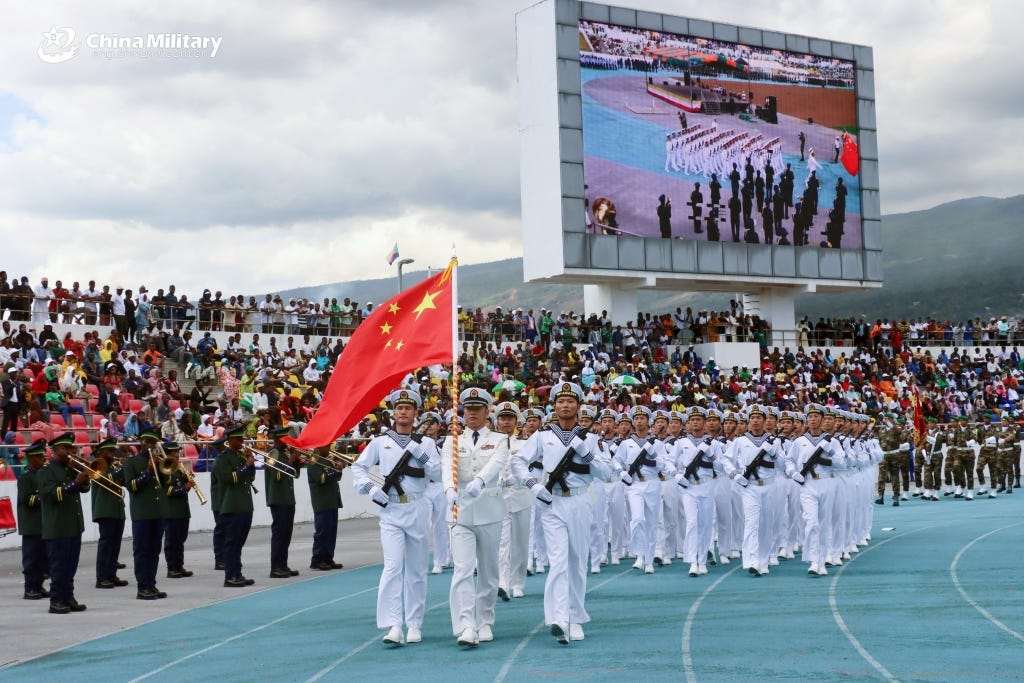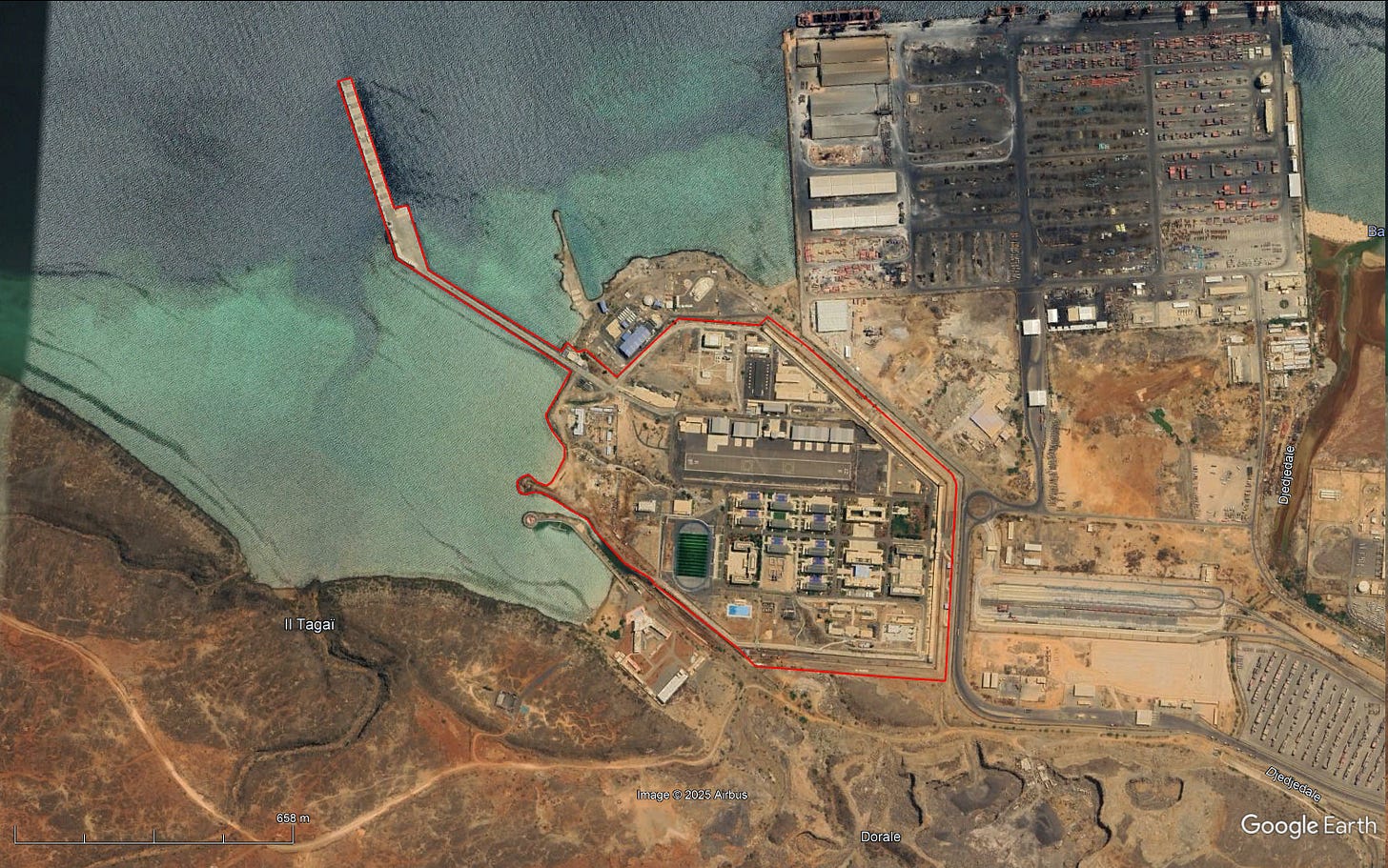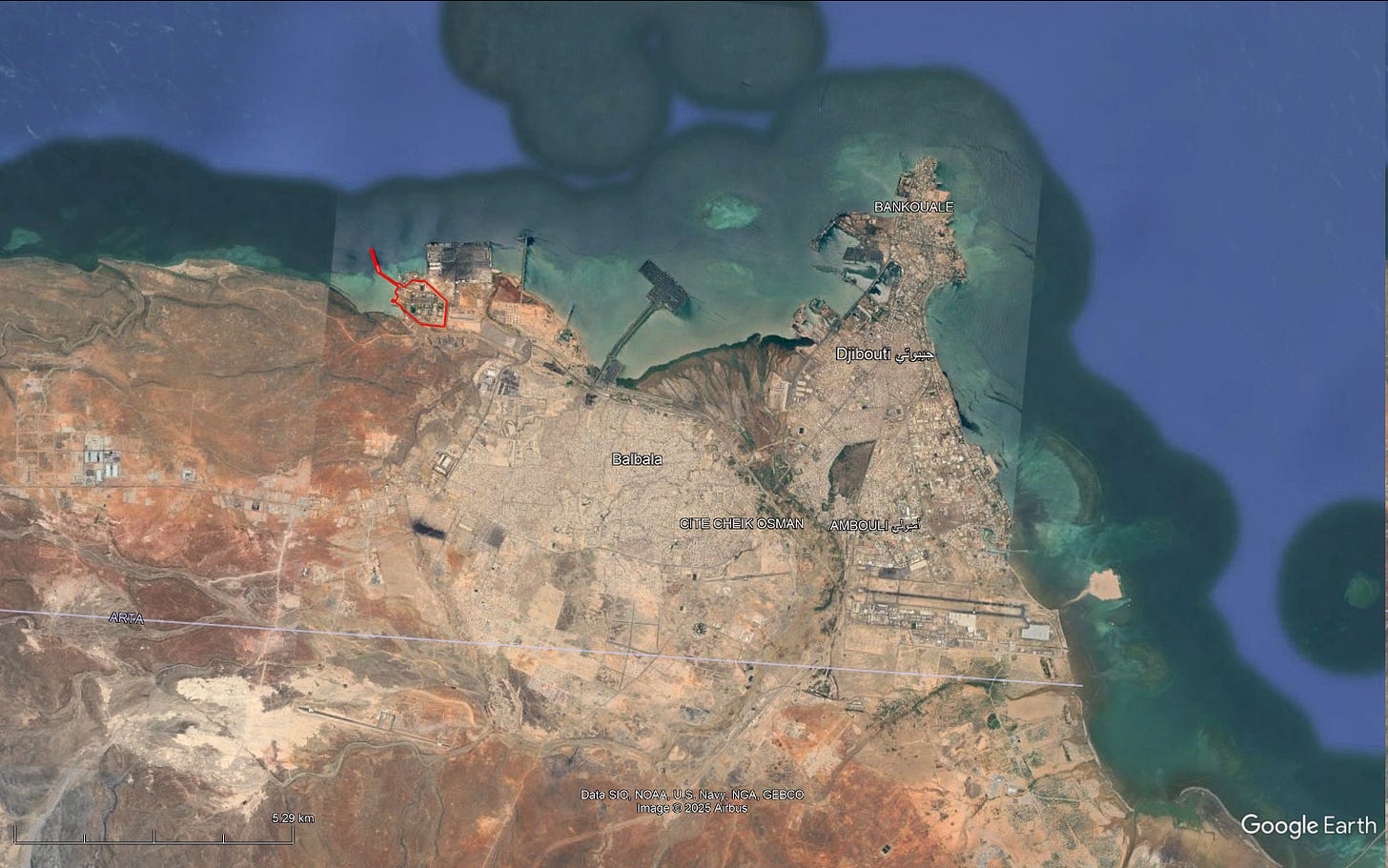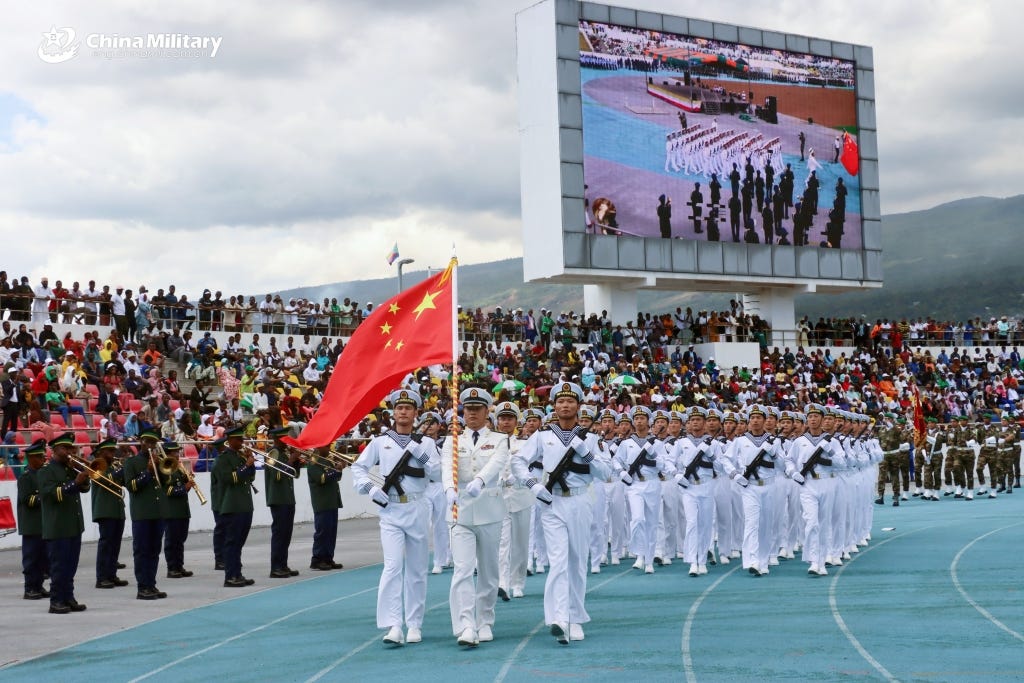PLA Base in Djibouti Facilitates Chinese Military Diplomacy in Madagascar, Comoros
🇨🇳 A forward presence can open many doors but the PLA base in Djibouti remains very small

In 2017, China opened a military base in Djibouti, the first such Chinese military base on foreign territory. While subject to much breathless discussion, the PLA base in Djibouti amounts to relatively little in the way of combat capabilities. China has, in effect, forward-deployed a small garrison that is, for the most part, just about as large as it needs to be to serve as a resupply point for visiting PLA Navy warships—the base includes a modest pier that is exclusively used by the PLA Navy—and run operations on-site, including force protection. The PLA garrison is too small to do much outside the base, including direct participation in non-combatant evacuation missions in neighbouring countries, let alone direct combat operations within Djibouti or elsewhere.
The Chinese military base in Djibouti includes a 400-meter-long runway, which is, in practice, primarily limited to allowing rotary-wing aircraft—helicopters—to undertake rolling takeoffs. When the PLA requires the use of fixed-wing aircraft—China has, to date, only sent military transport aircraft to Djibouti—it must make use of Djibouti–Ambouli International Airport, which is also home to a long-term French military presence, a long-term Japanese military presence, and, not least, a large long-term U.S. military presence in Camp Lemmonier (which is, in effect, part of the airport complex). While the PLA occasionally makes use of Djibouti-Ambouli International Airport on an as-needed basis, it does not have a permanent presence even in the civilian part of the dual-use airport—the Djibouti Armed Forces also have a presence at the airport. All things considered, China’s military base in Djibouti is primarily a logistical node. The base—which lacks a full-length runway—is too small to accommodate a much larger combat-oriented garrison, and there is no public indication that this state of affairs is set to change anytime soon.


While the PLA base in Djibouti is small and primarily serves as a logistical node, it is well-positioned to support Chinese military diplomacy by virtue of the fact that it is the only permanent Chinese military presence in Africa, excluding China’s quite substantial long-term participation in United Nations peacekeeping missions in Sudan and South Sudan. Beyond military attaches, the military base in Djibouti, and United Nations peacekeeping missions, the Chinese military has a remarkably small military presence in Africa. This situation persists despite the burgeoning economic ties between China and African countries and the outsize role that fairly low-end Chinese military equipment—oftentimes export-only systems that are not used by the PLA—plays in the military modernization efforts of many sub-Saharan African countries. By virtue of being forward-deployed in Africa, the PLA contingent in Djibouti is inherently well-positioned to be the vanguard for Chinese military diplomacy across Africa. In June and July 2025, observers caught a glimpse of the form that an expansion of Chinese military diplomacy in Africa may look like going forward.
On 26 June 2025, fifty-three sharply dressed PLA Navy sailors and officers participated in the military parade held in Antananarivo to mark the sixty-fifth anniversary of Madagascar’s independence from France.
On 6 July 2025, Comoros held a military parade to mark the fiftieth anniversary of the country’s independence from France. Participating in the modest parade held in the capital of an island country home to around 900,000 inhabitants was the sharply dressed fifty-three-strong contingency of PLA Navy sailors and officers marching behind the Chinese flag.

Needless to say, the recent PLA presence at parades in Madagascar and Comoros is almost entirely symbolic in nature. China can neither invade a country with a reinforced platoon-sized formation nor can it enhance a host-partner government’s security with such a force (presuming that decisionmakers in Beijing are even interested in either option or similar). Nevertheless, these recent very short-term deployments in two African countries are without precedent for a Chinese military that primarily interacts with other militaries—outside of East Asia—on foreign soil through military attaches and United Nations peacekeeping missions. While China could, in principle, have sent similarly-sized PLA contingents to Madagascar and Comoros on one or more direct flights from China, the presence of a PLA contingent forward-deployed in Djibouti in both instances suggests that Beijing may be trying to maximize the returns on its investment in what remains its sole overseas military base.
Going forward, PLA contingents may become a regular presence at the many military parades held across Africa every year. Even small-scale deployments of honour guards can fly the Chinese flag outside of embassies, showcase the PLA’s capacity to extend its reach, and advertise Chinese military equipment (note, however, that foreign participation in military parades is almost always limited to personnel marching on foot—there is limited scope to advertise heavy equipment unless personnel equipped with such equipment are garrisoned in the host country in which the parade is held). Should China go down this path, there may be a somewhat expanded PLA garrison in Djibouti, including, perhaps, the regular presence of one or more Chinese military transport aircraft to facilitate a greater footprint for Chinese military diplomacy in Africa. While the PLA is increasingly home to world-class military capabilities, it remains such an exceptionally insular military that the mere presence of PLA honour guards in faraway foreign military parades warrants even a moment of analytical attention.

